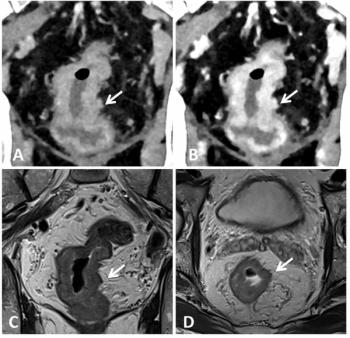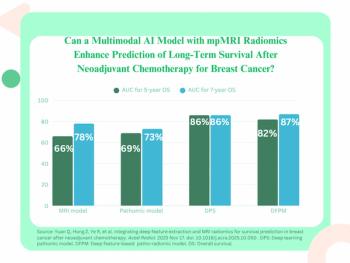
Diffusion-Weighted MRI Most Effective MRI Technique to Monitor Ovarian Cancer
Diffusion-weighted MRI is the most effective MRI technique to detect and evaluate patient response to platinum-based neoadjuvant chemotherapy for late-state ovarian cancer.
Diffusion-weighted MRI is the most effective MRI technique to detect and evaluate patient response to platinum-based neoadjuvant chemotherapy for late-state ovarian cancer, according to researchers from the University of Cambridge in the United Kingdom. Unlike CT scans, which only measure tumor size, MRIs are able to detect a change in structure.
To find a more effective way of monitoring patient progress during treatment, the researchers recruited 22 patients who had advanced ovarian cancer. The women all underwent abdominal and pelvic MRI by standard scan, which was followed by scans using each of three techniques: diffusion-weighted MRI, dynamic contrast material-enhanced [DCE] MRI, and hydrogen 1MR spectroscopy. Different parameters were used to compare the results from the scans: the apparent diffusion coefficient (ADC), vascular signal fraction (VSF) and DCE MR images.
There were no differences noted, pre and post treatment with the DCE MR images. With the ADC, there was a difference. The researchers measured the movement of water molecules in the primary tumor and in cancer cells that had spread.
After treatment, the patients who responded to the chemotherapy showed a significantly larger increase in the ADC measurement of the primary tumor than did the nonresponders. The cancer cells that had spread to the abdominal lining did not change.
This change was the result of the chemotherapy killing off some of the cancer cells, allowing for more space in the tumor for water molecules. This did not happen in the other sites, so this could mean that different treatment is needed for those cancer cells.
The study was published online, ahead of print in the journal
Newsletter
Stay at the forefront of radiology with the Diagnostic Imaging newsletter, delivering the latest news, clinical insights, and imaging advancements for today’s radiologists.




























